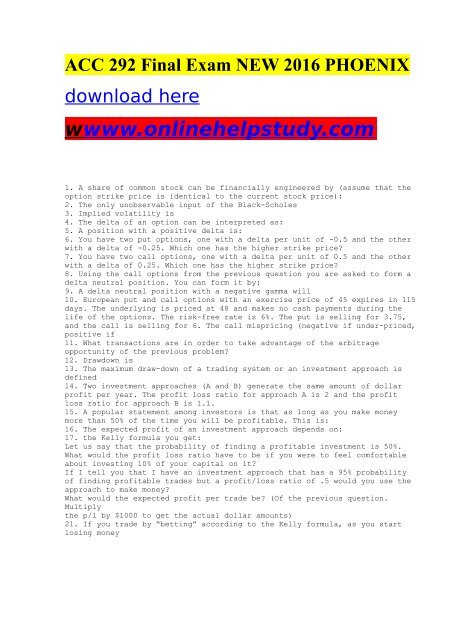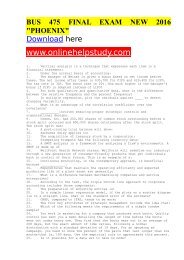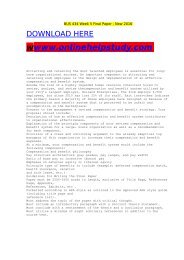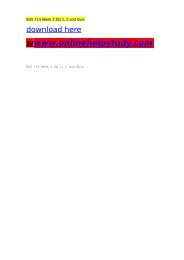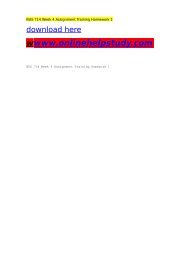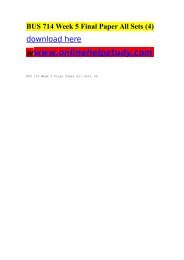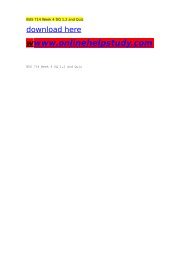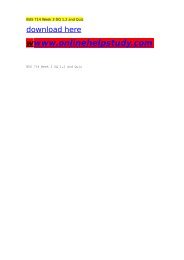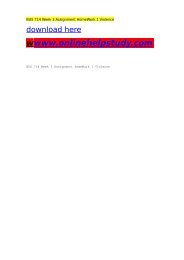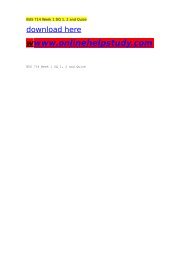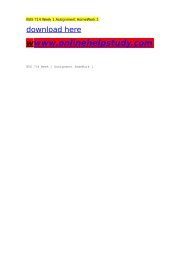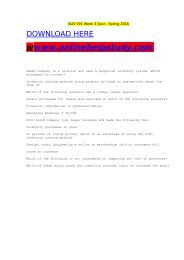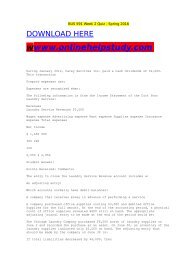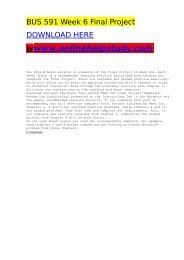ACC 292 Final Exam NEW 2016 PHOENIX
ACC 292 Final Exam NEW 2016 PHOENIX http://onlinehelpstudy.com/exam_text.php?cat=16089 1. A share of common stock can be financially engineered by (assume that the option strike price is identical to the current stock price): 2. The only unobservable input of the Black-Scholes 3. Implied volatility is 4. The delta of an option can be interpreted as: 5. A position with a positive delta is: 6. You have two put options, one with a delta per unit of -0.5 and the other with a delta of -0.25. Which one has the higher strike price? 7. You have two call options, one with a delta per unit of 0.5 and the other with a delta of 0.25. Which one has the higher strike price? 8. Using the call options from the previous question you are asked to form a delta neutral position. You can form it by: 9. A delta neutral position with a negative gamma will 10. European put and call options with an exercise price of 45 expires in 115 days. The underlying is priced at 48 and makes no cash payments during the life of the options. The risk-free rate is 6%. The put is selling for 3.75, and the call is selling for 6. The call mispricing (negative if under-priced, positive if 11. What transactions are in order to take advantage of the arbitrage opportunity of the previous problem? 12. Drawdown is 13. The maximum draw-down of a trading system or an investment approach is defined 14. Two investment approaches (A and B) generate the same amount of dollar profit per year. The profit loss ratio for approach A is 2 and the profit loss ratio for approach B is 1.1. 15. A popular statement among investors is that as long as you make money more than 50% of the time you will be profitable. This is: 16. The expected profit of an investment approach depends on: 17. the Kelly formula you get: Let us say that the probability of finding a profitable investment is 50%. What would the profit loss ratio have to be if you were to feel comfortable about investing 10% of your capital on it? If I tell you that I have an investment approach that has a 95% probability of finding profitable trades but a profit/loss ratio of .5 would you use the approach to make money? What would the expected profit per trade be? (Of the previous question. Multiply the p/l by $1000 to get the actual dollar amounts) 21. If you trade by “betting” according to the Kelly formula, as you start losing money
ACC 292 Final Exam NEW 2016 PHOENIX
http://onlinehelpstudy.com/exam_text.php?cat=16089
1. A share of common stock can be financially engineered by (assume that the option strike price is identical to the current stock price):
2. The only unobservable input of the Black-Scholes
3. Implied volatility is
4. The delta of an option can be interpreted as:
5. A position with a positive delta is:
6. You have two put options, one with a delta per unit of -0.5 and the other with a delta of -0.25. Which one has the higher strike price?
7. You have two call options, one with a delta per unit of 0.5 and the other with a delta of 0.25. Which one has the higher strike price?
8. Using the call options from the previous question you are asked to form a delta neutral position. You can form it by:
9. A delta neutral position with a negative gamma will
10. European put and call options with an exercise price of 45 expires in 115 days. The underlying is priced at 48 and makes no cash payments during the life of the options. The risk-free rate is 6%. The put is selling for 3.75, and the call is selling for 6. The call mispricing (negative if under-priced, positive if
11. What transactions are in order to take advantage of the arbitrage opportunity of the previous problem?
12. Drawdown is
13. The maximum draw-down of a trading system or an investment approach is defined
14. Two investment approaches (A and B) generate the same amount of dollar profit per year. The profit loss ratio for approach A is 2 and the profit loss ratio for approach B is 1.1.
15. A popular statement among investors is that as long as you make money more than 50% of the time you will be profitable. This is:
16. The expected profit of an investment approach depends on:
17. the Kelly formula you get:
Let us say that the probability of finding a profitable investment is 50%. What would the profit loss ratio have to be if you were to feel comfortable about investing 10% of your capital on it?
If I tell you that I have an investment approach that has a 95% probability of finding profitable trades but a profit/loss ratio of .5 would you use the approach to make money?
What would the expected profit per trade be? (Of the previous question. Multiply
the p/l by $1000 to get the actual dollar amounts)
21. If you trade by “betting” according to the Kelly formula, as you start losing money
You also want an ePaper? Increase the reach of your titles
YUMPU automatically turns print PDFs into web optimized ePapers that Google loves.
<strong>ACC</strong> <strong>292</strong> <strong>Final</strong> <strong>Exam</strong> <strong>NEW</strong> <strong>2016</strong> <strong>PHOENIX</strong><br />
download here<br />
wwww.onlinehelpstudy.com<br />
1. A share of common stock can be financially engineered by (assume that the<br />
option strike price is identical to the current stock price):<br />
2. The only unobservable input of the Black-Scholes<br />
3. Implied volatility is<br />
4. The delta of an option can be interpreted as:<br />
5. A position with a positive delta is:<br />
6. You have two put options, one with a delta per unit of -0.5 and the other<br />
with a delta of -0.25. Which one has the higher strike price?<br />
7. You have two call options, one with a delta per unit of 0.5 and the other<br />
with a delta of 0.25. Which one has the higher strike price?<br />
8. Using the call options from the previous question you are asked to form a<br />
delta neutral position. You can form it by:<br />
9. A delta neutral position with a negative gamma will<br />
10. European put and call options with an exercise price of 45 expires in 115<br />
days. The underlying is priced at 48 and makes no cash payments during the<br />
life of the options. The risk-free rate is 6%. The put is selling for 3.75,<br />
and the call is selling for 6. The call mispricing (negative if under-priced,<br />
positive if<br />
11. What transactions are in order to take advantage of the arbitrage<br />
opportunity of the previous problem?<br />
12. Drawdown is<br />
13. The maximum draw-down of a trading system or an investment approach is<br />
defined<br />
14. Two investment approaches (A and B) generate the same amount of dollar<br />
profit per year. The profit loss ratio for approach A is 2 and the profit<br />
loss ratio for approach B is 1.1.<br />
15. A popular statement among investors is that as long as you make money<br />
more than 50% of the time you will be profitable. This is:<br />
16. The expected profit of an investment approach depends on:<br />
17. the Kelly formula you get:<br />
Let us say that the probability of finding a profitable investment is 50%.<br />
What would the profit loss ratio have to be if you were to feel comfortable<br />
about investing 10% of your capital on it?<br />
If I tell you that I have an investment approach that has a 95% probability<br />
of finding profitable trades but a profit/loss ratio of .5 would you use the<br />
approach to make money?<br />
What would the expected profit per trade be? (Of the previous question.<br />
Multiply<br />
the p/l by $1000 to get the actual dollar amounts)<br />
21. If you trade by “betting” according to the Kelly formula, as you start<br />
losing money


